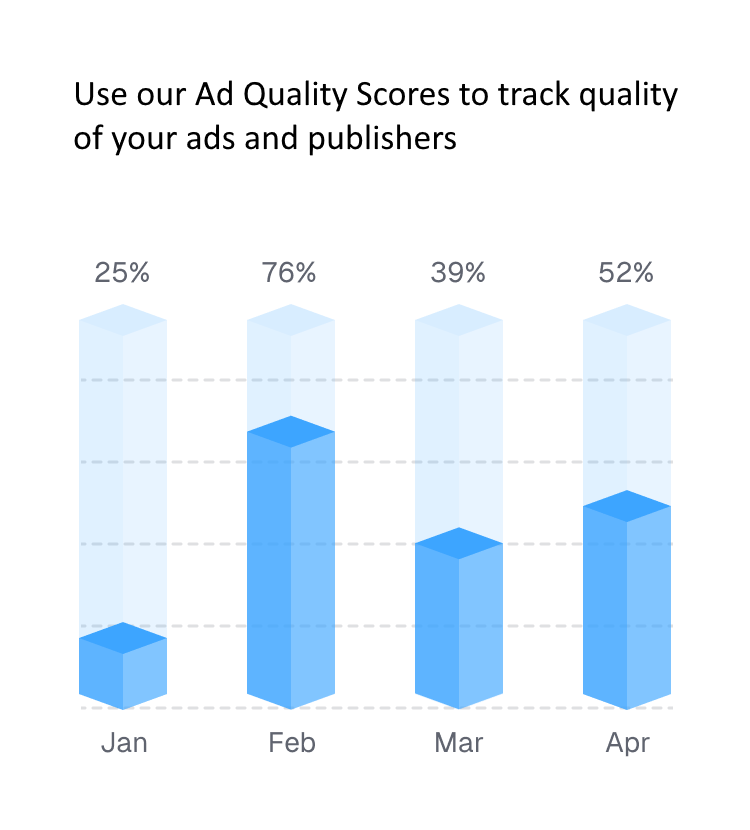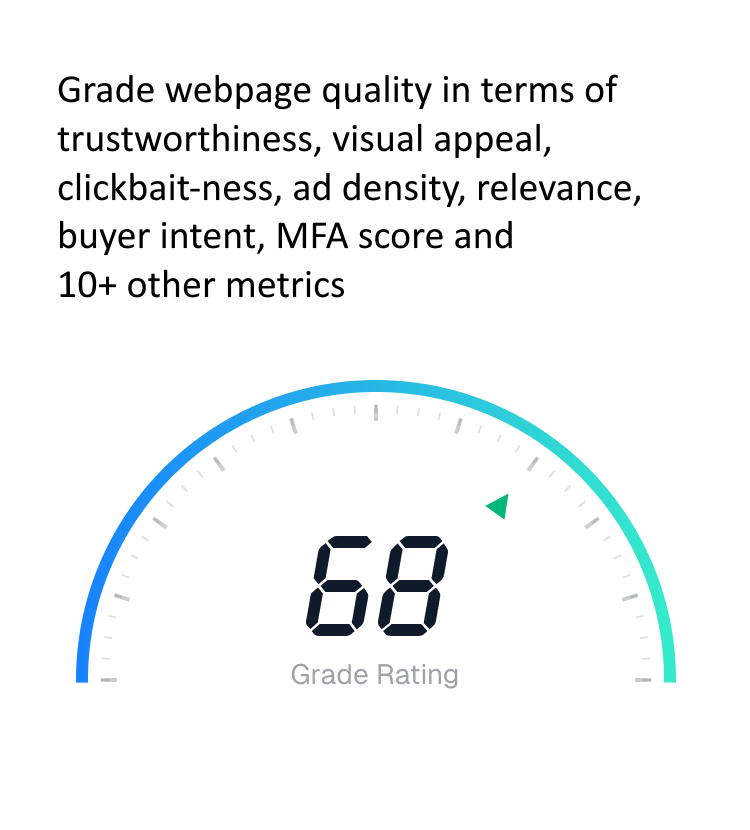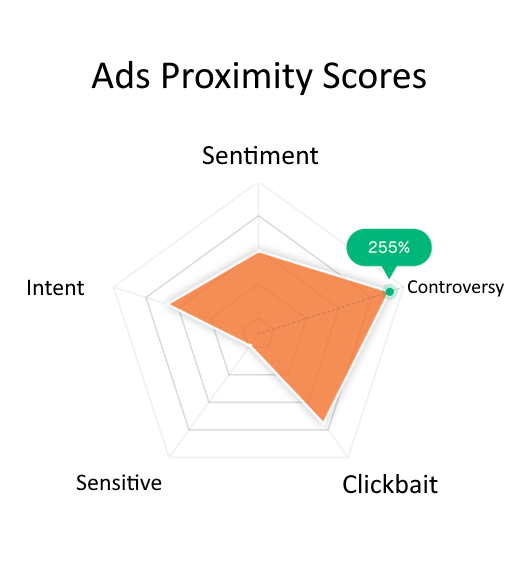Instantly classify any website URL with industry-leading accuracy and speed. Our powerful API delivers comprehensive categorization results in milliseconds.
Try Live DemoReal-time URL categorization is the process of instantly analyzing and classifying any website URL into predefined categories based on its content, context, and characteristics. Our advanced API leverages cutting-edge machine learning algorithms and natural language processing to deliver accurate categorization results within milliseconds of receiving a request.

In today's fast-paced digital ecosystem, businesses need immediate insights into the nature and content of websites they encounter. Whether you're protecting your brand from appearing on inappropriate sites, filtering content for your users, or optimizing ad placements, real-time categorization provides the instantaneous intelligence you need to make informed decisions.
Our real-time categorization API processes over 100 million requests daily for enterprises worldwide, delivering consistent accuracy rates exceeding 99%. Unlike traditional batch processing methods that can take hours or days, our API returns comprehensive categorization data instantly, enabling you to act on information as it becomes available.
Our real-time categorization system employs a sophisticated multi-stage analysis process that combines multiple advanced technologies to deliver accurate, reliable results:
Average Response Time
Classification Accuracy
API Uptime SLA
Daily API Requests
Our real-time categorization API offers a comprehensive suite of features designed to meet the diverse needs of modern enterprises:
Multi-Taxonomy Support: Unlike competing solutions that support only a single classification system, our API simultaneously categorizes URLs across multiple industry-standard taxonomies. Every request returns categorization results for IAB Content Taxonomy (both versions 2.0 and 3.0), IPTC NewsCodes, Google Shopping Taxonomy, Shopify Product Taxonomy, Amazon Category Taxonomy, and our proprietary Web Content Filtering taxonomy. This eliminates the need to maintain multiple categorization services and ensures consistency across your organization.
Hierarchical Category Structures: We don't just assign a single broad category to each URL. Our system provides complete hierarchical category paths, allowing you to understand content classification at multiple levels of granularity. For example, a technology news article might be classified as "News & Politics > Technology News > Artificial Intelligence > Machine Learning Applications," giving you precise control over how you handle different content types.

Confidence Scoring: Every category assignment includes a confidence score ranging from 0 to 1, indicating our system's certainty about the classification. This transparency allows you to set custom thresholds based on your specific use case requirements. Applications requiring high precision can use only high-confidence categorizations, while those prioritizing recall can include lower-confidence suggestions.
Rich Enrichment Data: Beyond basic categorization, our API returns comprehensive enrichment data including:
Comprehensive Language Support: Our categorization engine supports content in over 100 languages, automatically detecting the language and applying language-specific models for optimal accuracy. Whether you're categorizing English websites, Chinese e-commerce platforms, or Arabic news sources, our system delivers consistent, reliable results.
Dynamic Content Handling: Modern websites increasingly rely on JavaScript frameworks and dynamic content loading. Our categorization system employs headless browser technology to fully render pages, execute JavaScript, and capture content loaded through AJAX requests, single-page application frameworks, and lazy-loading techniques. This ensures we categorize the actual user experience, not just static HTML.
Organizations across industries leverage our real-time categorization API to solve critical business challenges:
Brand Safety in Digital Advertising: Advertisers and agencies use our API to verify ad placements in real-time, ensuring their brand messages never appear alongside inappropriate, controversial, or brand-damaging content. By integrating our API directly into ad serving workflows, brands can make instant decisions about bid requests, blocking placements on unsuitable sites before ads are served.
Content Filtering and Parental Controls: Internet service providers, schools, libraries, and parental control software rely on our real-time categorization to filter web content. When a user attempts to access a URL, our API instantly categorizes the site, allowing the filtering system to allow or block access based on configured policies. Our low latency ensures minimal impact on browsing experience while maintaining comprehensive protection.
Contextual Advertising Optimization: Demand-side platforms and ad networks use our API to understand page context and serve relevant advertisements. By categorizing destination URLs in real-time, advertisers can match their creative content to appropriate contexts, improving engagement rates and campaign performance while avoiding wasted impressions on irrelevant placements.

Cybersecurity and Threat Intelligence: Security operations centers integrate our API into their threat detection pipelines, categorizing suspicious URLs discovered in email attachments, network traffic, or security logs. Real-time categorization helps security teams quickly identify phishing attempts, malware distribution sites, and command-and-control servers, enabling faster incident response.
Competitive Intelligence Gathering: Market research teams use our API to categorize competitor websites and newly discovered online businesses, automatically building comprehensive databases of competitive landscapes. The enrichment data, including detected technologies, company information, and audience demographics, provides valuable intelligence without manual research effort.
Integrating our real-time categorization API into your systems is straightforward and well-documented. We provide comprehensive SDKs for all major programming languages including Python, JavaScript/Node.js, Java, PHP, Ruby, and Go. Our RESTful API follows industry best practices, using standard HTTP methods and returning responses in JSON format.
A basic API request requires only the URL you want to categorize and your API key for authentication. Optional parameters allow you to specify which taxonomies to return, set confidence thresholds, request specific enrichment data fields, and control timeout behavior. Our API documentation includes extensive examples and code snippets for common integration patterns.
For high-volume applications processing thousands of requests per second, we offer batch processing endpoints that accept multiple URLs in a single request, significantly improving throughput and reducing network overhead. Our global infrastructure automatically routes requests to the nearest data center, minimizing latency regardless of your geographic location.
Our real-time categorization infrastructure is built for massive scale and consistent performance. We operate distributed data centers across five continents, with automatic failover and load balancing ensuring 99.93% uptime. Our API infrastructure can handle sudden traffic spikes without degradation, having successfully processed over 10 billion requests in a single month during peak usage periods.
Response times remain consistently low even under heavy load, with 95% of requests completing in under 500 milliseconds and 99% completing within one second. For latency-critical applications, we offer premium endpoints with guaranteed sub-200ms response times for cached results.
Rate limiting is implemented fairly and transparently, with clear error messages when limits are approached and automatic retry mechanisms built into our official SDKs. Enterprise customers receive dedicated infrastructure allocation, ensuring their requests never compete with general API traffic.
Maintaining industry-leading categorization accuracy requires continuous investment in model training, data quality, and validation. Our machine learning team regularly evaluates categorization performance against human-labeled validation datasets, maintaining accuracy rates consistently above 99% for primary category assignments.
We employ a multi-stage quality assurance process that includes automated testing of new models against established benchmarks, manual review of edge cases and challenging categorizations, and ongoing monitoring of production categorization quality through customer feedback and automated anomaly detection.
Our models are retrained monthly using fresh data that includes newly registered domains, updated content from existing sites, and emerging content categories. This ensures our categorization remains accurate even as the internet evolves, capturing new trends, technologies, and content types as they emerge.
We take security and privacy seriously, implementing multiple safeguards to protect your data and categorization requests. All API communications occur over encrypted HTTPS connections using modern TLS protocols. We never store or log the actual content of URLs you categorize, only anonymized metadata necessary for billing and service improvement.
Our infrastructure complies with SOC 2 Type II standards and undergoes regular third-party security audits. We implement comprehensive access controls, encryption at rest for all stored data, and maintain detailed audit logs of system access and modifications.
For customers with strict data residency requirements, we offer region-specific API endpoints that guarantee request processing occurs only within specified geographic boundaries. European customers can use our EU-only endpoints to maintain GDPR compliance, while customers in other regions can select appropriate regional endpoints.
Successful API integration requires excellent documentation and responsive support. Our developer documentation includes comprehensive guides, interactive API explorers, code examples in multiple languages, troubleshooting references, and best practices for common implementation patterns.
All customers receive technical support via email, with enterprise customers receiving access to dedicated support channels including phone support, Slack integration, and assigned technical account managers. Our support team includes engineers who understand both the technical aspects of API integration and the business requirements driving your implementation.
We maintain a public status page showing real-time API performance metrics and historical uptime data. When incidents occur, we provide transparent communication about the issue, estimated resolution time, and post-incident reports detailing root causes and preventive measures.
Experience the power of instant, accurate website categorization with our industry-leading API.
Try Free Demo Now